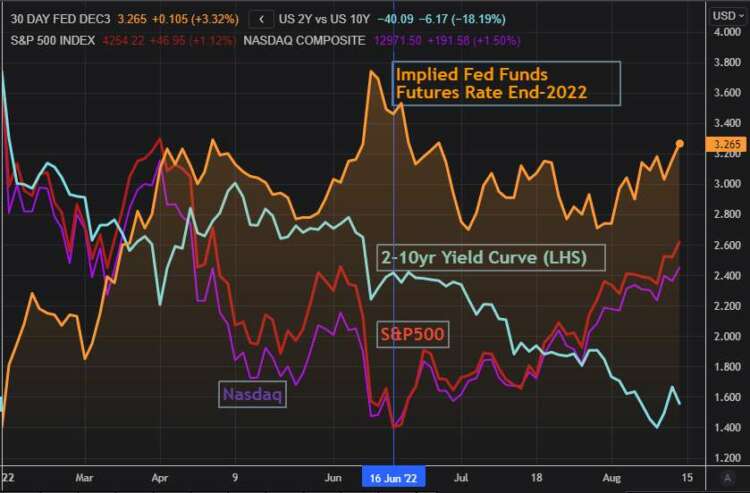
By Huw Jones
LONDON (Reuters) – Global shares struggled to advance on Monday while investors digested news of an unexpected cut in Chinese interest rates as data pointed to faltering growth in the world’s second largest economy, sending oil prices nearly 2% lower.
Weaker U.S. stock index futures also weighed on sentiment, while a steadier dollar knocked gold.
The MSCI all country index was barely firmer, a month-long advance having whittled away the benchmark’s decline for the year to about 13%.
China’s central bank cut key lending rates to revive demand as data showed the economy unexpectedly slowing in July, with factory and retail activity squeezed by Beijing’s zero-COVID policy and a property crisis. Until now, investors have been grappling with how much further central banks in the United States and Europe would hike rates when they meet next month.
Hopes of smaller rate hikes on signs that U.S. inflation may be peaking helped Wall Street clock up its fourth straight week of gains by Friday.
The gains on Wall Street and steady growth figures for Japan helped the Nikkei share average in Tokyo jump to its highest in more than seven months.
“China, I think, is a different situation than the rest of the world. They’ve got a self imposed recession that they’ve created from the zero COVID policy,” said Patrick Armstrong, chief investment officer at investment house Plurimi Group.
“I do think it’s going to be Fed driven if there is another leg down in markets. Quantitative tightening, I think, will begin in earnest in September and that’s going to withdraw liquidity from the market,” Armstrong said.
Markets are still implying around a 50% chance the Fed will hike by 75 basis points in September and that rates will rise to around 3.50-3.75% by the end of the year.
The Fed will publish minutes on Wednesday from its last rate-setting meeting, but investor hopes of them showing the central bank beginning to pivot on rate hikes could be dashed.
“I don’t think (Fed Chair) Powell is going to say that, I don’t think the minutes are going to indicate that,” Armstrong said.
In Europe, the STOXX share index of 600 leading companies was up 0.13% at 441.43 points, still down around 10% for the year.
Graphic: Fed Rate Futures and Stocks – https://fingfx.thomsonreuters.com/gfx/mkt/mopangymbva/Two.PNG

U.S. FUTURES EASE
S&P 500 futures and Nasdaq futures were both down around 0.5% after last week’s gains.
Earnings from major retailers, including Walmart and Target, will be scrutinised for signs of flagging consumer demand.
The cut in Chinese interest rates failed to stop Chinese blue chips easing 0.13%, while the yuan and bond yields also slipped.
Geopolitical risks remain high with a delegation of U.S. lawmakers in Taiwan for a two-day trip.
The bond market still seems to doubt the Fed can manufacture a soft landing, with the yield curve remaining deeply inverted. Two-year yields at 3.27% are well above those for 10-year notes which were trading at 2.86%.
Those yields have underpinned the U.S. dollar, though it did slip 0.8% against a basket of currencies last week as risk sentiment improved.
But on Monday the dollar regained some poise, with the euro down 0.2% against the greenback at $1.02345 after bouncing 0.8% last week. Against the yen, the dollar steadied at 133.51 after losing 1% last week.
“Our sense remains that the dollar rally will resume before too long,” argued Jonas Goltermann, a senior economist at Capital Economics.
Gold was down 0.8% at $1,786, losing nearly all of its 1% gains last week.
Oil prices eased as China’s disappointing data added to worries about global demand for fuel.
The head of the world’s top exporter, Saudi Aramco, said it was ready to ramp up output while production at several offshore U.S. Gulf of Mexico platforms is resuming after a brief outage last week.
Brent slipped 1.8% to $96.35, while U.S. crude fell 1.9% to $90.34 per barrel.
(Reporting by Wayne Cole; Editing by Sam Holmes, Raju Gopalakrishnan and Ed Osmond)


